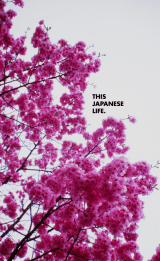If you are hot, or cold, go soak in a tub.
Sitting in a cold bath with a 2 liter of Polcari Sweat after days of suits, airports and 92-degree humidity is euphoric. Now, the cicadas are all dead, the breeze is crisp and the water, 50 degrees C and steaming, is divine.
Bathing in Japan predates any concern for modern sanitation. People did it because it felt good, and they do it so often that it has influenced architecture: You will rarely see (ie, I have literally never seen) a Japanese home where the toilet is in the same room as the bath. And you will rarely see a shower and a bath in the same space – usually, they’re next to each other, in their own room, next to a room for the sink/toothbrush/makeup.
The bath tub has a dashboard in the kitchen: Wake up, get the coffee going and hit a button to start the water running in the bath. There’s even a timing mechanism. Tell the bath what time you want to come home, and there will be a full tub of water waiting for you at whatever temperature you want.
This isn’t so sophisticated everywhere in Japan. Some people hand crank water and light a gas grill underneath a water pipe. I’ve heard stories of apartments where occupants had to boil water manually on the stove, but I suspect these people have been placed in barbarian housing.
Regardless of the squalor, the tub exists for reasons unrelated to getting clean.
Everyday Rituals
In Shinto, purification rituals typically involve fire, salt, or water. If you mix these things, you get soup or a bath. (Bathing salts aren’t built into the system, but they’re sold in the “Bath and Relaxation” sections of department stores).
When bathing at home or in public, you shower first, soap down and wash your hair. The goal of the bath isn’t to get physically clean, it’s to soak.
Most Japanese people probably wouldn’t say they like baths for religious reasons. But the public bath as a purification ritual – and the bathing instinct distinct to Japanese culture – has Shinto roots.
Outside of every Shinto shrine is a ceremonial stone fountain with fresh, running water. Before you enter the shrine, you use a bamboo ladle to rinse your hands of impurities. Some Shinto diehards also sip and spit the water out. It’s a purification ritual.
Impurity, in the Shinto sense, isn’t sin. Rather, impurity is more akin to “distractions,” as in the poem of Shen-hsiu, a famous Chinese monk, about dust on a mirror. Shen-hsiu’s poem, like a lot of things in Japan, bridges Shinto and Zen Buddhism: It’s said that the human mind should simply absorb and reflect the light of the world, such as it is, and not be distracted by its own projections. Water symbolizes a cleaning of the mirror and a restoration to a natural, open, flexible peace with the world.
And so, the bath is a kind of accidental meditation, a cleaning of the mirror. Tubs are small, so you sit still, staring at steam as it rises from your body. The waterline ebbs and flows visibly with every breath. The outer contours of your flesh blurs in the water. You stop knowing precisely where your body ends.
The result is that the bath becomes a rejuvenating moment of simply being.
The tub is also a little small – I’m not much taller than the Japanese average, and most of the time my legs are forced into a cross-legged pose similar to the lotus position of Buddhist meditation, only I’m floating. To expand on the new-age cliche, I usually set up some incense.
If a pure mind washed clean of all distractions sounds too boring, there are plenty of distractions for sale in department stores. These range from egg-shaped, weighted lights that sink to the bottom of the tub to project waves across the room, to waterproofed floating iPod cases, to small lanterns that project the night sky or Aurora Borealis onto the ceiling.
Baths are one of my favorite habits that I’ve picked up in Japan – that and the habit of never walking while eating or drinking. A handful of companies offer Japanese baths in the States at prices they don’t seem to advertise, but any old bath tub will probably be fine.






Great perspective on bathing! It is indeed a habit picked up easily. I discovered that years ago. It is by far the best way to rinse the grease and stress that daily life in Japan seems to load on your shoulders.
Pingback: On Heating an Apartment in Japan | This Japanese Life. | 生命を外面九天です
Pingback: On Japanese Funerals | This Japanese Life. | 生命を外面九天です
Pingback: On Using a Japanese Toilet | This Japanese Life. | 生命を外面九天です
Pingback: On Onsen, or Bathing With Friends and Coworkers | This Japanese Life. | 生命を外面九天です
Pingback: On Onsen, or Bathing With Friends and Coworkers | traveltocitiesinjapan.com
Pingback: “I have a bath once a month… – LeapingLife
Hi, I really like your blog – so interesting. I hope you don’t mind, but I have quoted this post in one I have written today about bathing – see https://leapinglife.wordpress.com/2016/02/12/i-have-a-bath-once-a-month/ :)
I love being quoted! :) Thanks!
My grandparents used to have me take Japanese-style baths as a child — unfortunately, minus the bath. We’d sit on a stool in the shower and fill a large bucket of water, soap ourselves down, and then slowly pour the water over ourselves using a bowl. Now that I know how they do it properly in Japan, I have a renewed interest in this ritual and I love how you explained it, especially how it relates to Shinto. So inspiring, thank you!